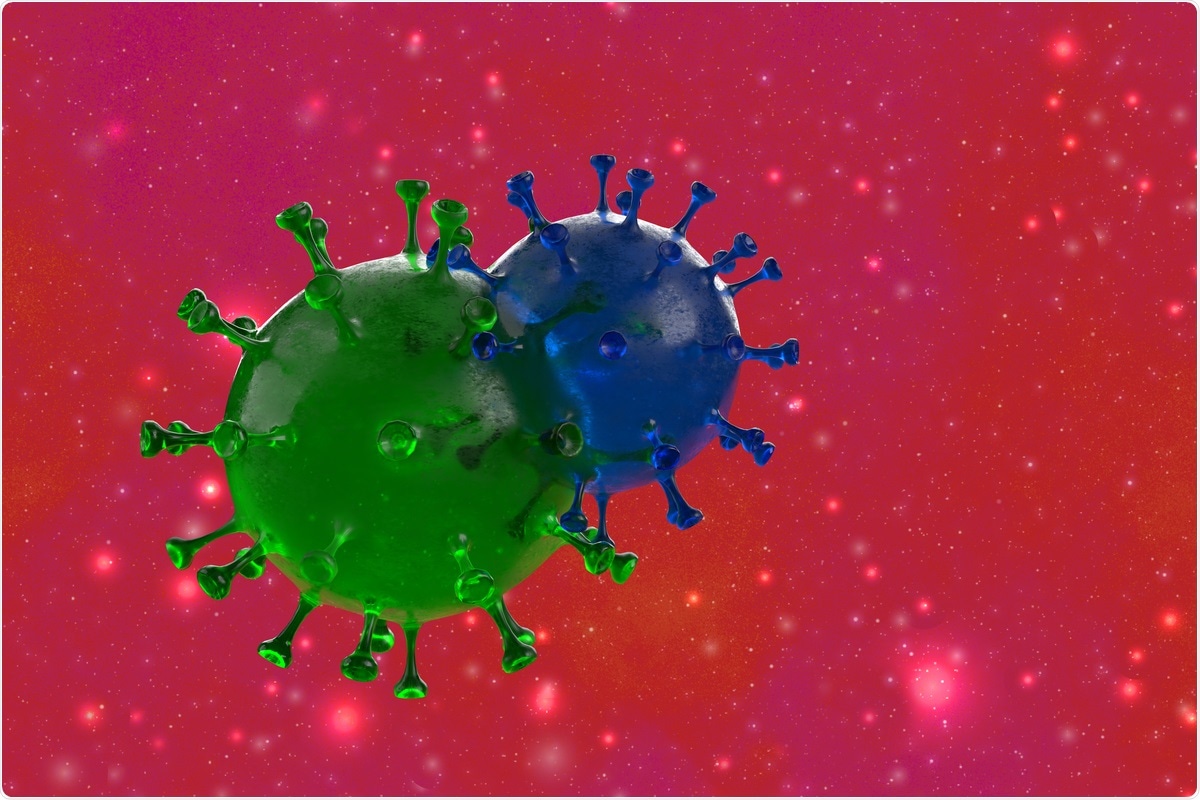Severe acute respiratory syndrome coronavirus 2 (SARS-CoV-2) was first detected during an outbreak in late 2019 in Wuhan, China. Since the emergence of this virus, the original strain has been supplanted by several variants, which have arisen from a variety of mutations. The Spike (S) protein of the virus is the location at which several of these mutations have occurred, which has given many variants the ability to evade the neutralizing antibody response.
 Study: SARS-CoV-2 Alpha, Beta and Delta variants display enhanced Spike-mediated Syncytia Formation. Image Credit: stockwars/ Shutterstock
Study: SARS-CoV-2 Alpha, Beta and Delta variants display enhanced Spike-mediated Syncytia Formation. Image Credit: stockwars/ Shutterstock
The subunits S1 and S2 make up the SARS-CoV-2 S protein. The S1 subunit comprises the receptor-binding domain (RBD) and the N-terminal domain (NTD). The RBD interacts with the angiotensin-converting enzyme 2 (ACE2) receptor and is the primary target for neutralizing antibodies. The functions of the NTD are not yet fully understood, but it is hypothesized that it may be associated with receptor recognition, glycan-binding, and pre-fusion-to-post-fusion conformational changes.
Researchers compared the replication and syncytia forming potential of Alpha, Beta, and D614G strains in human cell lines and primary airway cells. The authors also characterized the fusogenicity of the Alpha and Beta variants' S proteins and the contributions of each mutation in syncytia formation, ACE2 binding, and evasion of neutralizing antibodies. Finally, the authors analyzed the syncytia forming potential and ACE2 binding capacity of the Delta variant S protein.
A preprint* version of the study is available while the article undergoes peer review.
Syncytia formation in SARS-CoV-2 infected cells
The authors utilized an S-Fuse assay using U2OS-ACE2 GFP-split cells to induce syncytia in potential SARS-CoV-2 variants. The Alpha and Beta variants formed more numerous and larger infected syncytia upon infection of S-Fuse cells compared to both the original Wuhan strain and the D146G strain. By calculating the total syncytia area and then normalizing the nuclei number, the authors quantitatively characterized the differences in fusogenicity.
Significantly more syncytia were produced by the Alpha and Beta variants, relative to D614G, approximately 4.5 and 3-fold respectively, after 20 hours of infection with the same multiplicity of infection (MOI). Vero cells carrying the GFP-split system were generated to characterize syncytia formation in a cell line expressing endogenous ACE2.
Following 48 hours of infection with the same MOI, Alpha and Beta variants were still found to have produced significantly more syncytia when compared to D614G, which suggests that the Alpha and Beta variants are more fusogenic.
Antibody binding to S proteins bearing individual variant-associated mutations
Certain neutralizing antibodies affect the Alpha, Beta, and D614G variants differently. For example, the D614G variant is restricted by the neutralizing monoclonal antibody 48 (mAb48), but the Alpha and Beta variants are not. The authors determined which mutations in S protein variants contributed to the reduced recognition by neutralizing antibodies by utilizing flow cytometry to observe the binding of a panel of four monoclonal antibodies (mAbs) to different mutants of S proteins.
MAb48 did not recognize the Alpha and Beta variants, and it also did not bind to the K417N mutant. The Alpha and Beta variants were also not recognized by mAb71 and did not bind to their NTD ΔY144 and Δ242-244 mutations. A decrease in S-mediated fusion is caused by the mutations Δ242-244 and K417N, which suggests a trade-off between antibody escape and fusion.
The Beta variant was not recognized by mAb98, although the lack of binding was not a consequence of the associated mutations. This suggests antibody escape may be affected by a combined effect on the structure of the S protein. Therefore, despite a reduction in protein fusion ability, several mutations found in the S proteins of variants are advantageous in escaping antibodies.
Implications
In this study, the authors characterized the replication, antibody recognition, fusogenicity, and ACE2 binding of the Alpha and Beta variants of SARS-CoV-2 and the role of S-associated mutations. The authors detailed insights into the S-mediated fusogenicity of the variants but did not examine the conformational changes that individual mutations or a combination of mutations may elicit.
Furthermore, the authors show when compared to the D614G variant, the S proteins of the Alpha, Beta, and Delta variants bind to ACE2 more efficiently and are more fusogenic. The answer to why the Delta variant elicits higher transmissibility rates was not answered within this study and should be addressed in future work.